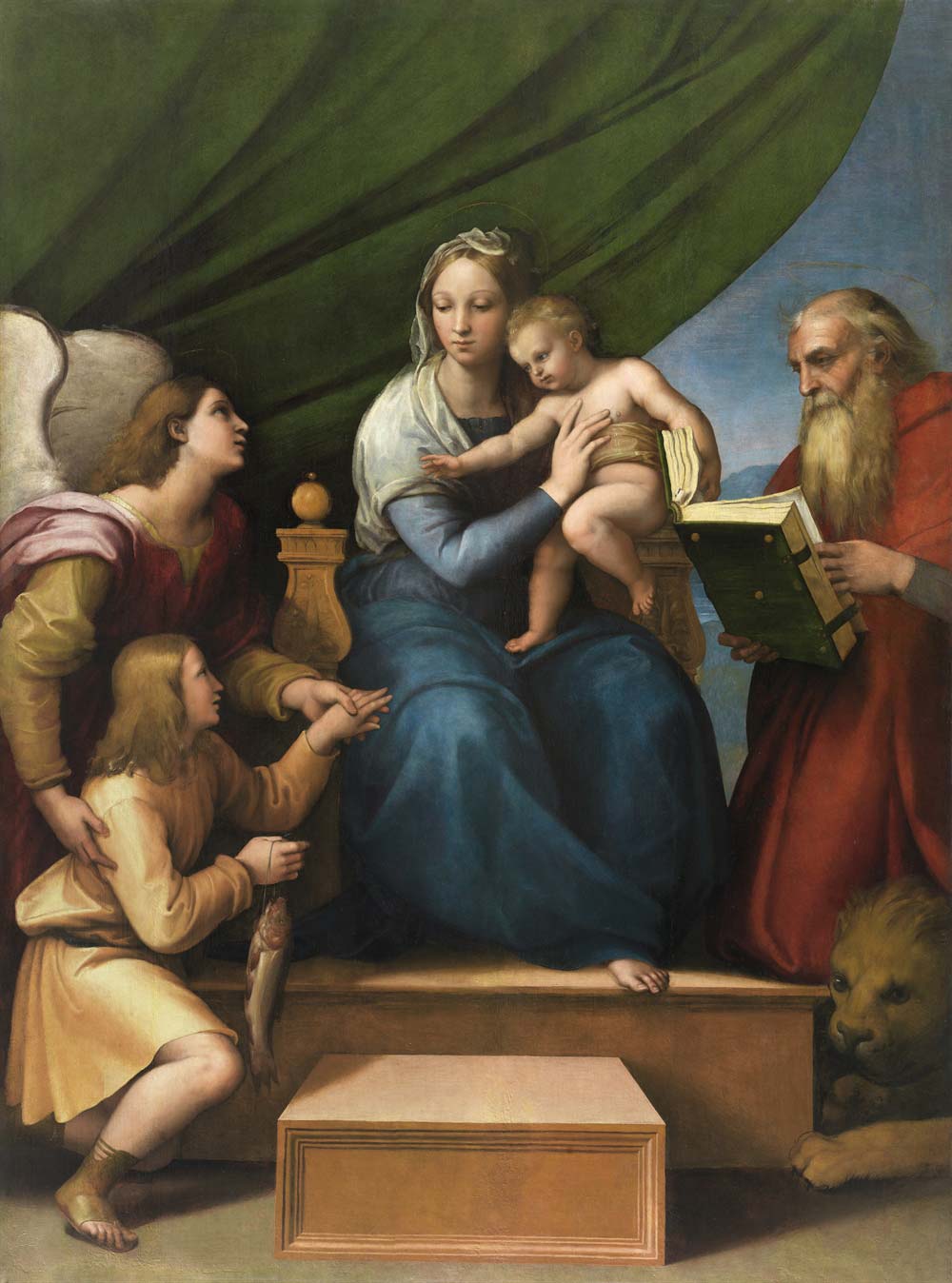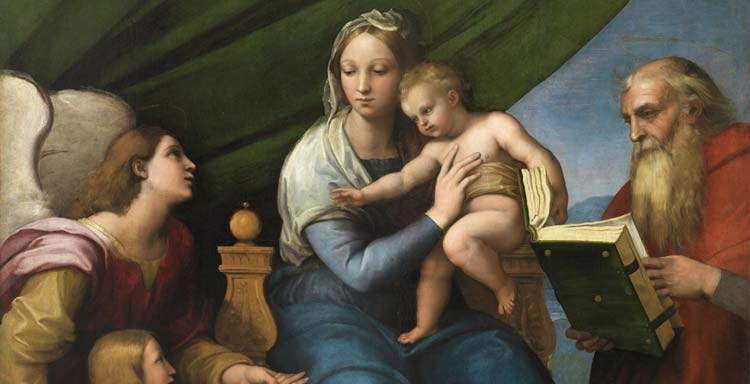Capodimonte, an exhibition on the Spanish in Naples during the Renaissance. And after 400 years, Raphael returns
From March 9 to June 25, 2023, the Museo e Real Bosco di Capodimonte in Naples is hosting the exhibition Gli Spagnoli a Napoli. The Southern Renaissance curated by Riccardo Naldi, professor of History of Modern Art at the University L’Orientale in Naples, and Andrea Zezza, professor of History of Modern Art at the University of Campania “Luigi Vanvitelli.” The exhibition project was realized in partnership with the Museo Nacional del Prado, where a first version of the exhibition opened on October 18, 2022 under the title Otro Renacimiento. Artistas españoles en Nápoles al comienzos del Cinquecento.
Thanks to this collaboration, the Madonna of the Fish executed by Raphael will return to Naples for the first time in 400 years. The painting, intended for the chapel of the Doce family in San Domenico Maggiore in Naples, became a key reference point for artists active in Naples during the 16th century. It was later removed by Spanish rulers and transferred to Madrid around the mid-17th century.
The exhibition is devoted to one of the most fruitful and least known moments of Neapolitan artistic civilization: the first thirty years of the sixteenth century (c. 1503-1532). The period, in political terms, saw the extinction of the Aragonese dynasty, with the passage of the Kingdom of Naples under the rule of the Spanish Crown; in cultural terms, the reaching of the apex of its great humanistic season, with the handover from Giovan Gioviano Pontano to Iacopo Sannazaro. The artistic innovations elaborated in those years by Leonardo, Michelangelo and Raphael were transposed and reinterpreted in an original way in a Naples that was still very much alive, for which the loss of its function as an autonomous capital was not an obstacle to cultural development but, on the contrary, contributed to the definition of a new role as the transmission belt of Renaissance culture between the two shores of the Mediterranean.

The exhibition offers an extensive survey of works executed by some of the leading Spanish artists active in Naples at the time, such as Pedro Fernández, Bartolomé Ordóñez, Diego de Siloe, Pedro Machuca, and Alonso Berruguete. Having moved much in time to Italy, they unleashed an extraordinary inventive originality in comparison with the works executed by the greatest protagonists of the height of the Italian Renaissance. The Spaniards became the protagonists of the exceptional artistic season in early 16th-century Naples, sustained by the patronage of religious orders and the aristocracy, eager to leave an indelible mark of their greatness by financing works of ambitious magnificence, often executed, in the manner of the Ancients, by making use of the durable Carrara marble. Back in their homeland, the Spaniards became ambassadors of a particular declination of the figurative culture of the High Renaissance, sustained by extraordinary inventiveness and technical skills, to which Spain’s passage within the imperial structure of Charles V gave a European breath.
The exhibition aims to focus attention on this brief but very happy season, emphasizing the very high quality of the works and their cosmopolitan character. Underlying the exhibition is the belief that that flowering saw a very close connection between painting and sculpture. The confrontation between the so-called “sister arts” found particularly fertile ground in Naples for the development of models that contributed to the definition of an autonomous local school, of which the exhibition offers a wide selection of the major protagonists, from painters Andrea Sabatini da Salerno and Marco Cardisco to sculptors Giovanni da Nola and Girolamo Santacroce. As happened in Rome because of the Sack of 1527, for the formerly Aragonese and then viceregal capital this ’golden age’ was suddenly broken by the extremely harsh French siege of 1528 and the serious political crisis that ensued.
The main difference between the Naples exhibition and the one in Madrid is the link with the territory: many of the works by the artists of the period can be found in the city’s churches, particularly in San Giovanni a Carbonara, in the convent complex of San Severino and Sossio, and also in San Giacomo degli Spagnoli, the symbol of Spain’s political and cultural presence in Naples, i.e., the very subject of the exhibition.
The exhibition is produced in partnership Museo Nacional Prado in Madrid, in collaboration with the Embassy of Spain in Italy and the Italian Embassy in Madrid, the Ministry of the Interior-FEC Fondo edifici di culto and the Curia of Naples, is financed thanks to the POC Capodimonte project. Art Routes of the Campania Region, enjoys the patronage of the City of Naples, has GESAC as the main sponsor and was made possible thanks to the support of the Friends of Capodimonte ets association. For all information you can visit the website of the National Museum of Capodimonte.
 |
| Capodimonte, an exhibition on the Spanish in Naples during the Renaissance. And after 400 years, Raphael returns |
Warning: the translation into English of the original Italian article was created using automatic tools. We undertake to review all articles, but we do not guarantee the total absence of inaccuracies in the translation due to the program. You can find the original by clicking on the ITA button. If you find any mistake,please contact us.



























